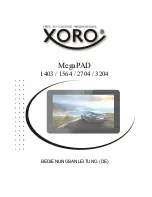
PLAYING AND RECORDING
14
En
Extreme caution should be exercised when you play back CDs encoded in DTS.
If you play back a CD encoded in DTS on a CD player that does not support DTS, only noise will be heard, and this noise
may damage your speakers. Check whether your CD player supports CDs encoded in DTS. Also, check the sound output
level of your CD player before you play back a CD encoded in DTS.
1
Press
A
(power) on the front panel inward to
turn on this unit.
2
Rotate the INPUT selector on the front panel
(or press one of the input selector buttons on
the remote control) to select the input source
you want to listen to.
3
Press SPEAKERS A and/or SPEAKERS B on
the front panel or on the remote control to
select speakers A and/or speakers B.
When speaker set A or speaker set B are turned on,
SP A or SP B is displayed on the front panel display
accordingly (see page 6).
• When one set of speakers is connected using bi-wire
connections, or when using two sets of speakers simultaneously
(A and B), make sure SP A and SP B are displayed on the front
panel display.
• When listening with headphones, turn off the speakers.
4
Play the source.
5
Rotate the VOLUME control on the front
panel (or press /– on the remote
control) to adjust the sound output level.
y
You can adjust the tonal quality by using the BASS, TREBLE,
BALANCE and LOUDNESS controls, the CD DIRECT AMP
switch (R-S700 only), or the PURE DIRECT switch on the front
panel (see page 15).
6
When finished listening, press
A
(power) on
the front panel outward to turn off this unit.
y
If RECEIVER
A
on the remote control is pressed while the
A
(power) button on the front panel is in the on position, this unit
enters standby mode. Press RECEIVER
A
again to turn this unit
on.
PLAYING AND RECORDING
CAUTION
Playing a source
A
(power)
SPEAKERS A/B
INPUT selector
VOLUME
RECEIVER
A
Input selector
buttons
SPEAKERS A/B
/–
Notes

































